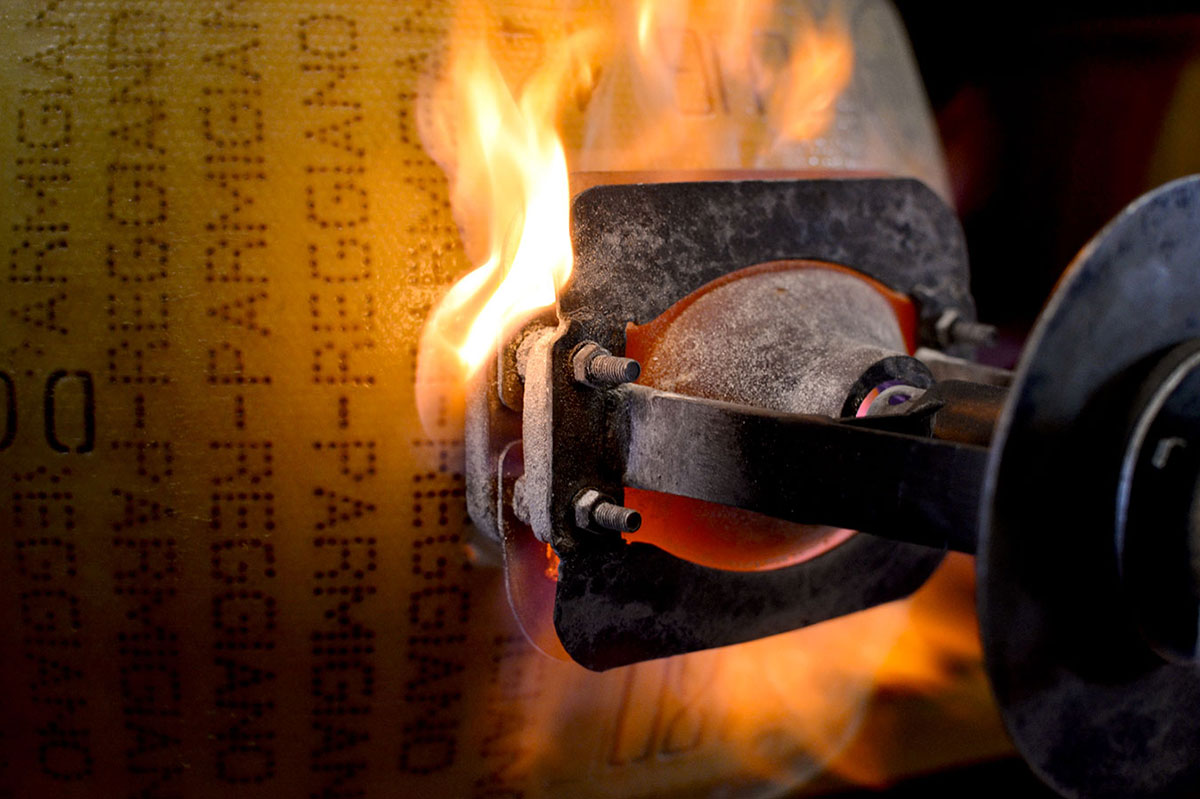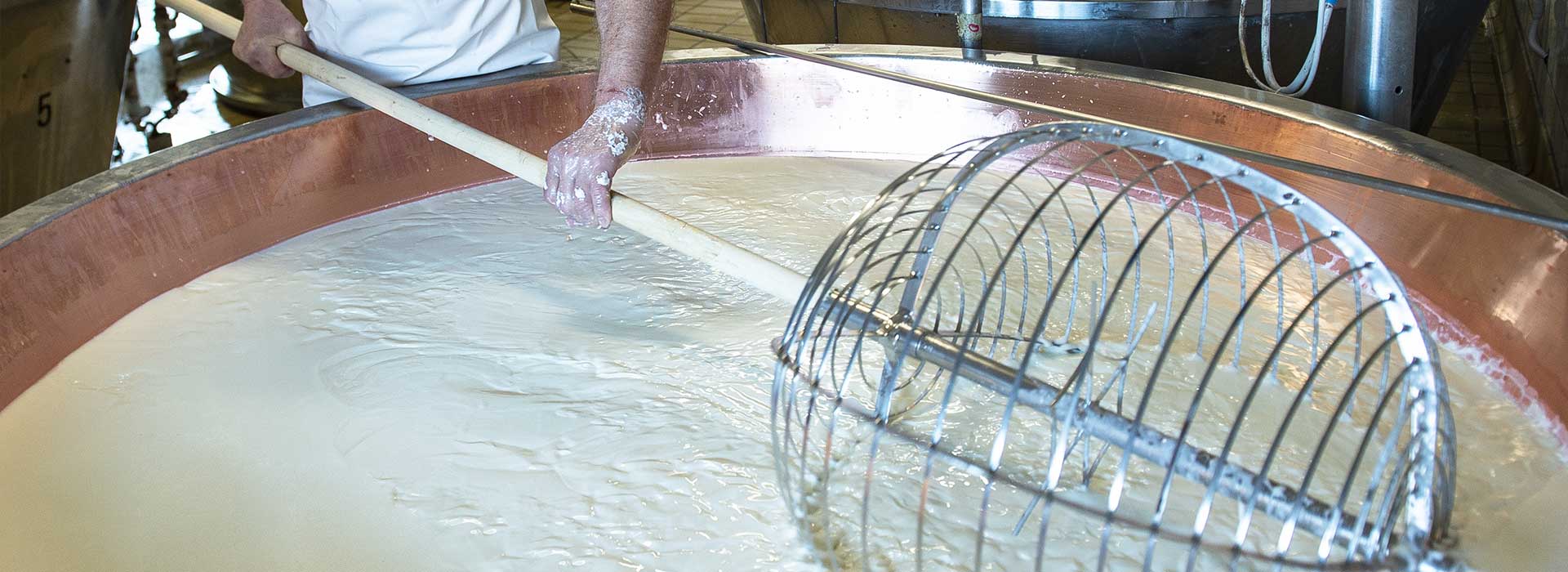first stepMilk
The whole milk obtained from the morning milking is mixed with the previous evening milk, which has been skimmed in steel containers. It takes 550 liters of milk to obtain a Parmigiano Reggiano wheel.
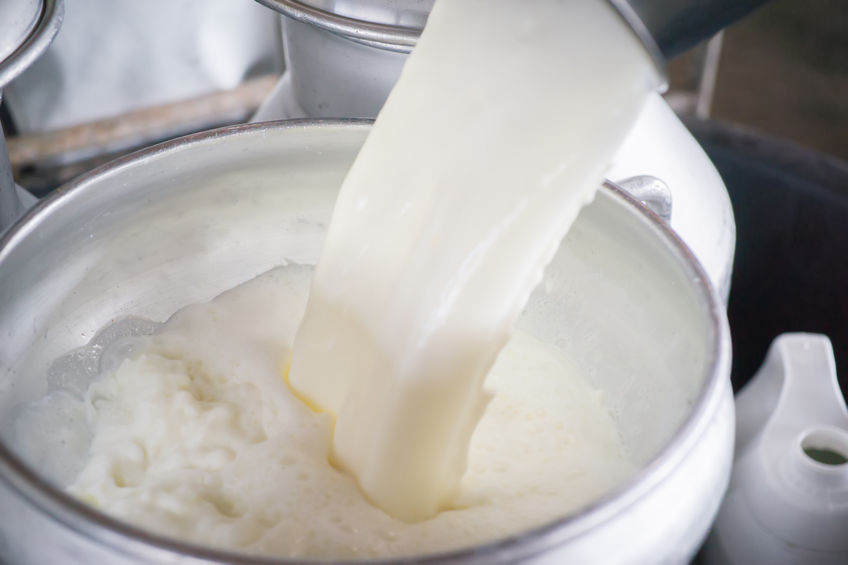
second step Whey
Now the milk is poured into huge traditional upturned bell-shaped copper vats; its temperature is gradually increased, and whey is added. This is a mixture of basic cultures obtained by a natural process from the residual whey of the previous day.
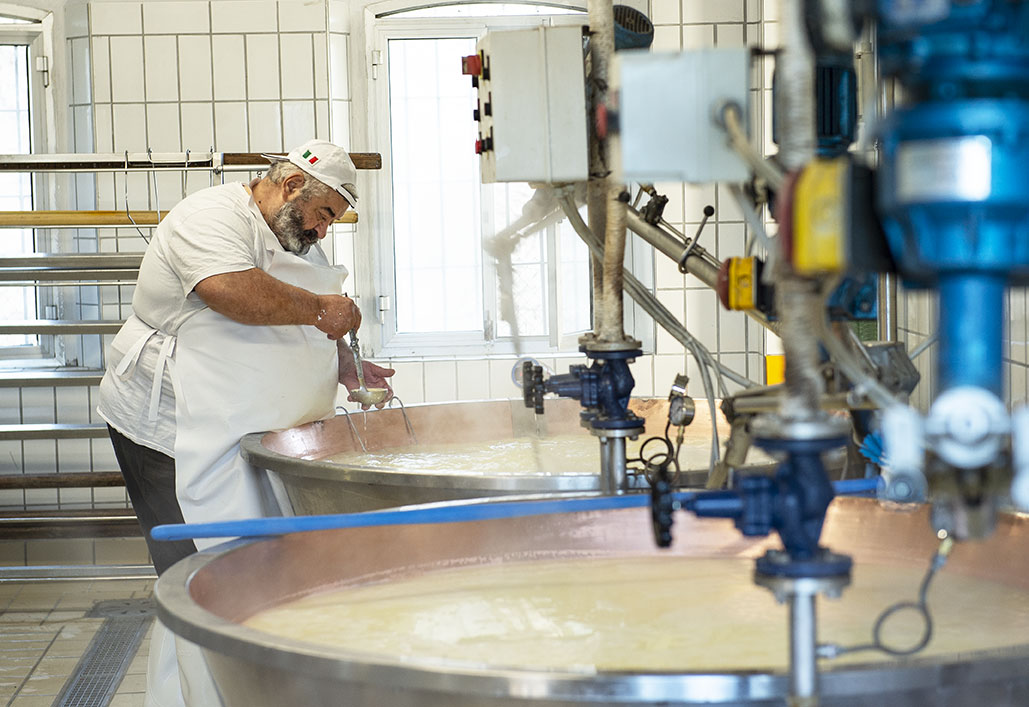
third stepRennet
Next, rennet is added to cause milk coagulation and create the so called curd; this is “broken” by the master cheesemaker into minuscule granules using a traditional tool called “spino”.
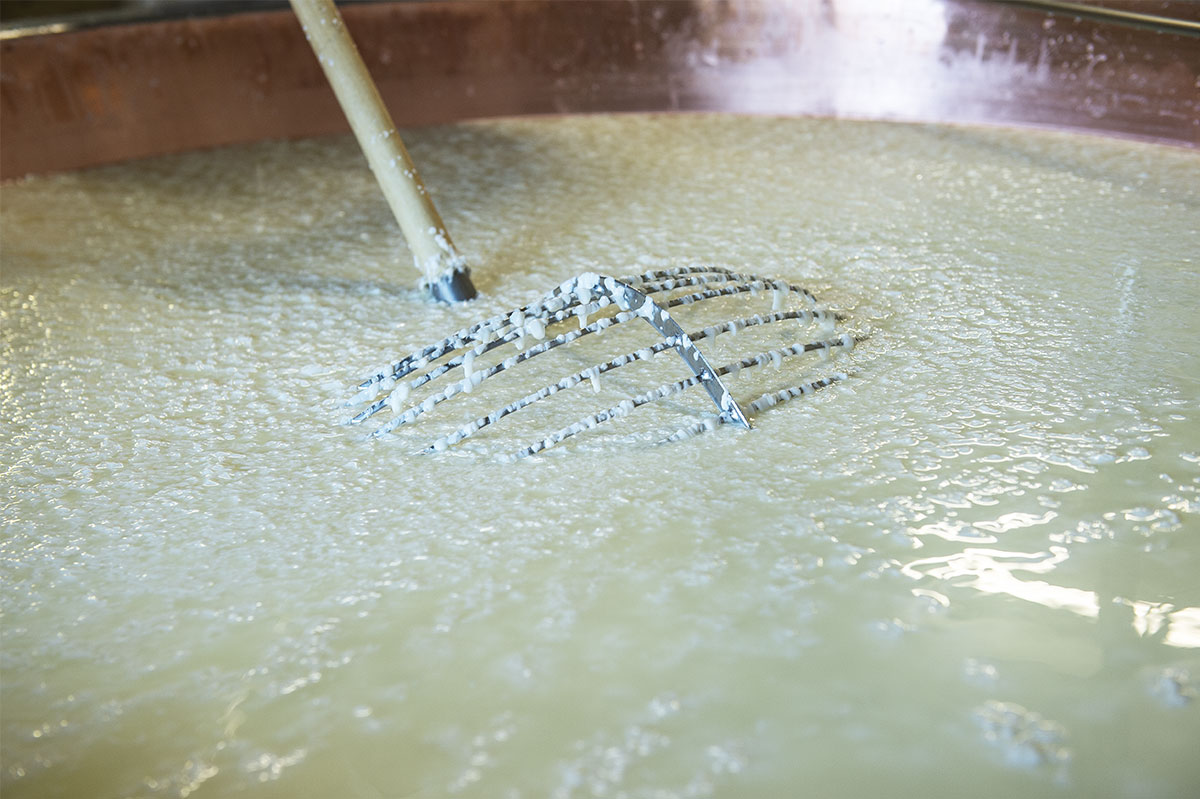
fourth stepCooking
Cooking process takes fifty minutes and temperature reaches 55 degrees centigrade; at the end of this process, the granules thicken at the bottom of the cauldron to form a single solid mass; this is brought to the surface by the help of a large cloth sheet by the cheese-maker who gives birth to two twin wheels cutting in half the cheesy mass.
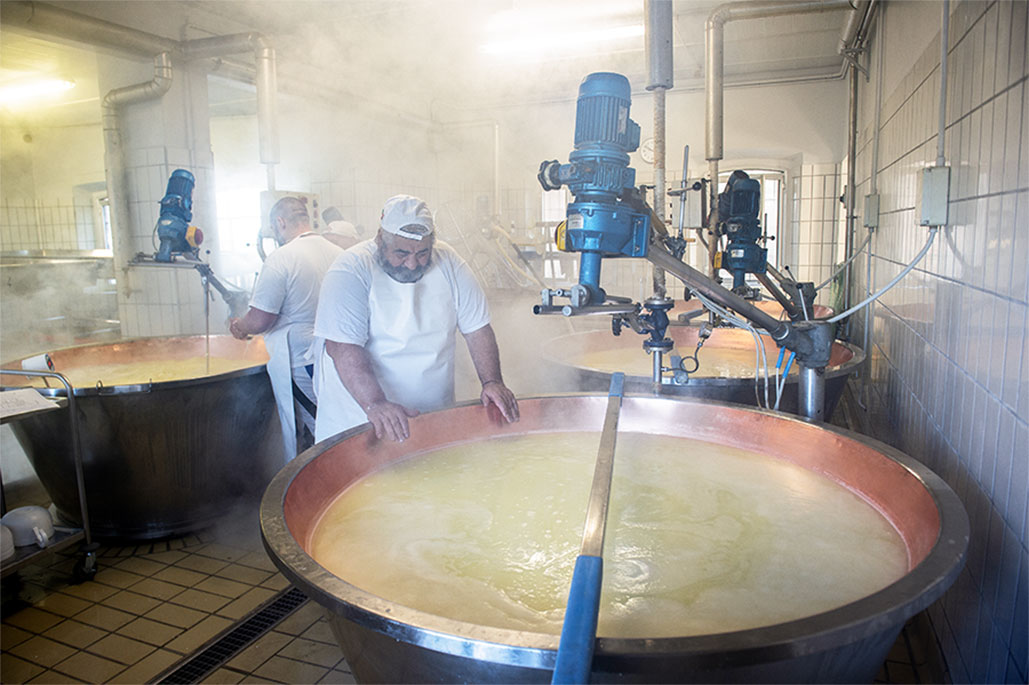
fifth stepResting
The cheesemaker places the two twin wheels into two moulds that give the typical shape to the future Parmigiano Reggiano; these new wheels are left resting for 2-3 days; right after this, the cheese is put in a saline solution for about 3 weeks in the order to achieve its characteristic flavor.timane.
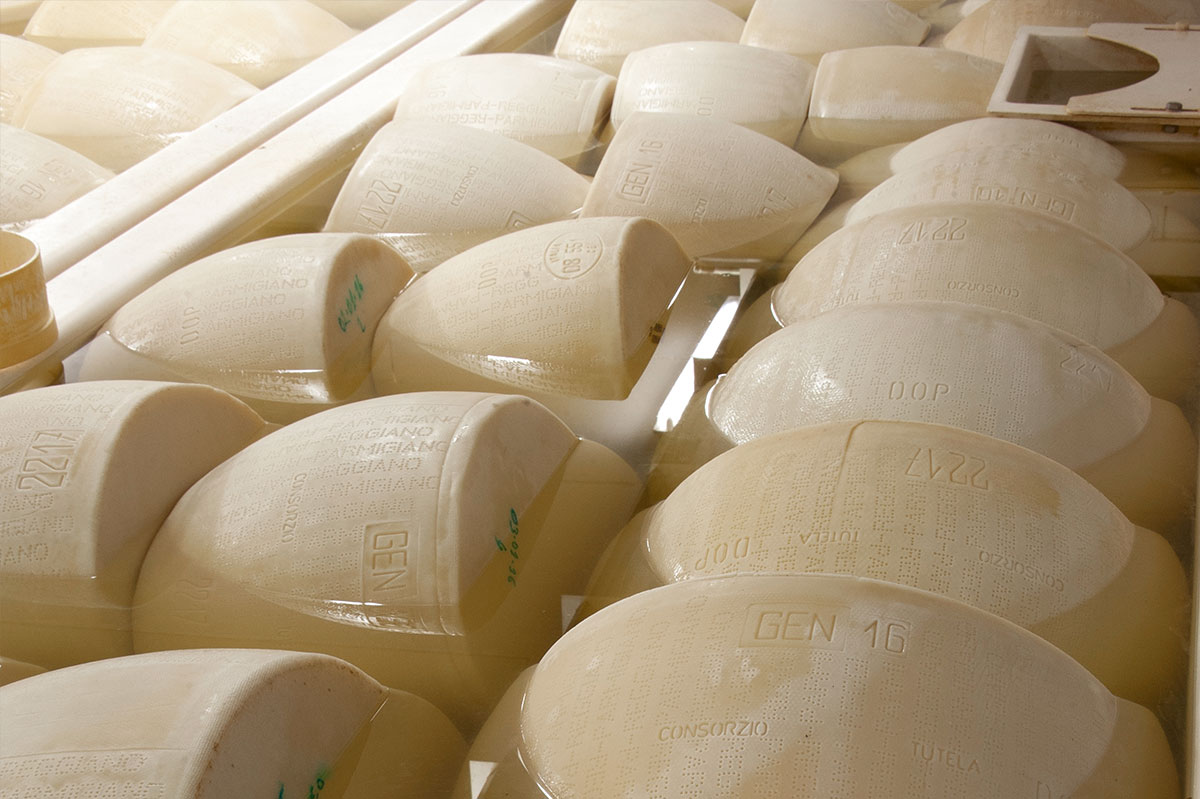
sixth stepSeasoning
To encourage the formation of the crust, cheeses are kept in a warm environment for a few days to prepare them for maturation, which lasts at least 12 months.
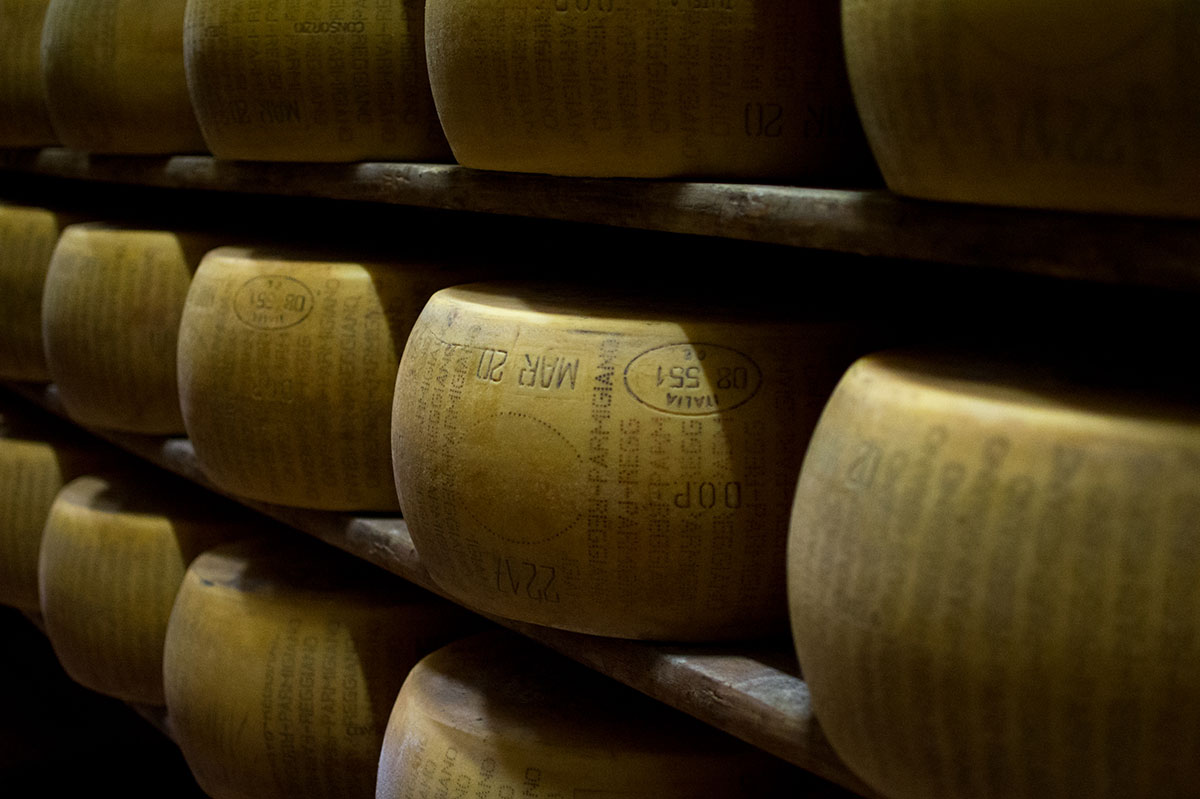
seventh stepQuality
After this period, “wheels” are tested with a special hammer to hear the sound and determine their quality.
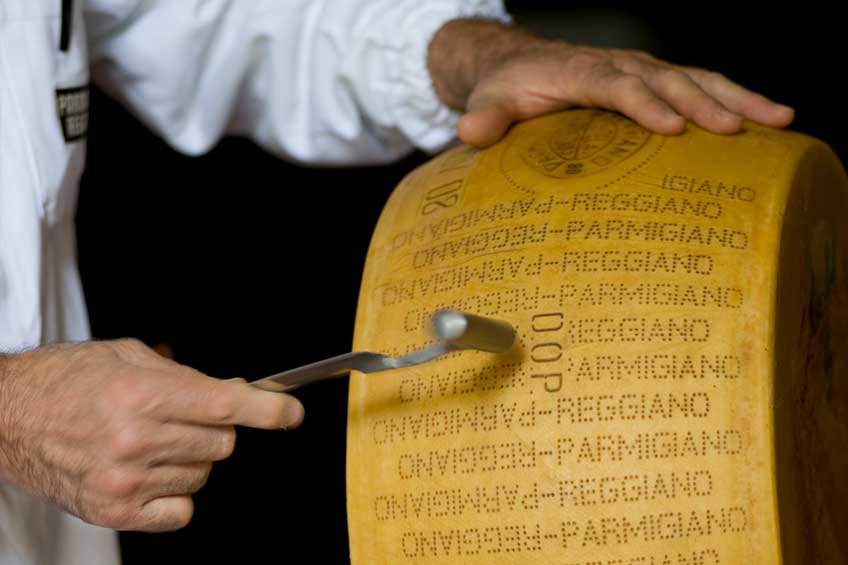
eighth stepThe consortium trademark
Only those wheels that satisfy quality standards are fire-branded with the consortium trademark.
